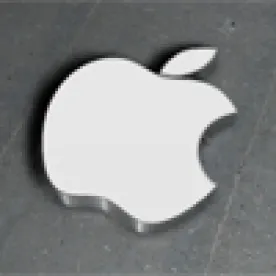Companies should make design patents a key part of a company’s patent strategy due to the possibility for non-apportioned awards for design patent infringement. For companies manufacturing products in high volume, especially, holding a design patent may mean a difference of millions of dollars in damages.
In a recent high-profile case, for example, Samsung was found to have infringed three patents held by Apple, including a design patent. The damages award exceeded $1 billion dollars. More recently, however, the U.S. Patent and Trademark Office (USPTO) found that Apple’s U.S. Design Patent D618,677 may not be patentable after all in a non-final ex partes re-examination decision on August 5, 2015. If the patent is ultimately found to be invalid, the decision can have a substantial impact on Apple’s billion dollar verdict.
That is because, unlike damages awards for infringement of utility patents, apportionment of damages is not required for infringement of design patents. Damages, under apportionment, may be limited to profits attributable to the patented design—in contrast to total profits from a product. A patent holder of a utility patent may only recover the portion profits attributable to the patent holder’s patented technology. Whereas a patent holder of a design patent may recover total profits regardless of a patented design’s attributable value to the infringing product.
35 U.S.C. § 289 provides for the recovery of total profits from sales of products infringing a design patent. Where the infringing design is present in more than one product, this may allow for the recovery of total profits from multiple products—leading to a possibility for high damages awards. 35 U.S.C. § 289 states:
Whoever during the term of a patent for a design, without license of the owner, (1) applies the patented design, or any colorable imitation thereof, to any article of manufacture for the purpose of sale, or (2) sells or exposes for sale any article of manufacture to which such design or colorable imitation has been applied shall be liable to the owner to the extent of his total profit, but not less than $250, recoverable in any United States district court having jurisdiction of the parties.
Nothing in this section shall prevent, lessen, or impeach any other remedy which an owner of an infringed patent has under the provisions of this title, but he shall not twice recover the profit made from the infringement.
35 U.S.C. § 289 was enacted in 1887 after a series of cases involving design patents on carpets, where the Supreme Court awarded the patent holders six cents. According to the Court, the patent holders were awarded only nominal damages because the patent holders could not show what portion of profits or losses was attributable to the patented design. Congress, apparently in response to the holding, enacted 35 U.S.C. § 289 to provide for total profits.
35 U.S.C. § 289 has been highly controversial since Apple’s damages award. Design patents protect new, original and ornamental designs for an article of manufacture. 35 U.S.C. § 171. A design patent, for example, may protect an ornamental design of a phone having round corners and a grid of icons, which are the subject of actual design patents held by Apple. Such a design patent would not protect the phone’s function—the phone’s messaging capabilities, camera, operating system, etc. would not be protected. 35 U.S.C. § 289, however, would provide for total profits irrespective of the value attributable to the round corners and grid of icons. Even minor design elements, in extreme cases, may provide for high damages awards. Academics and large companies alike have called for a change in the statute’s application.
Invalidation of Apple’s design patent, thus, may mean a significant reduction in Apple’s damages award. The decision, though, is a nonfinal decision and Apple will have the opportunity to respond and appeal if the USPTO issues a final decision.




 />i
/>i

